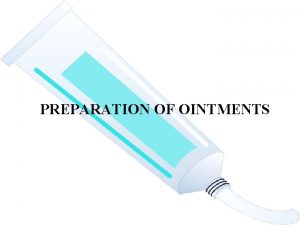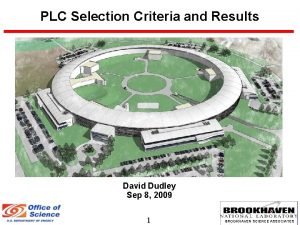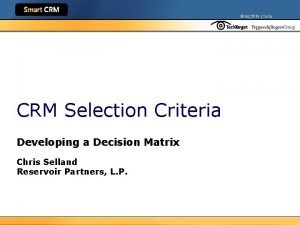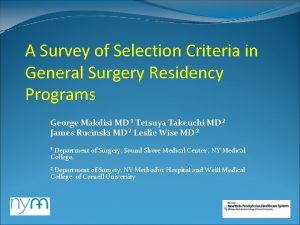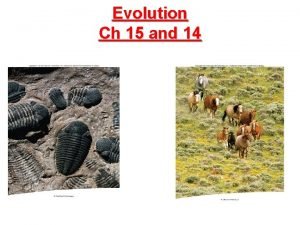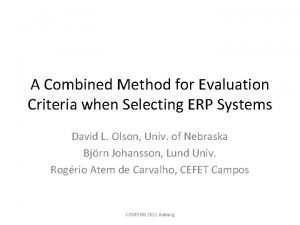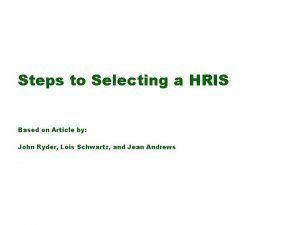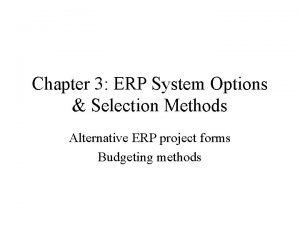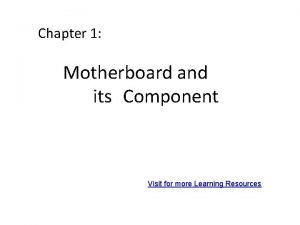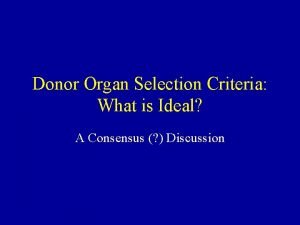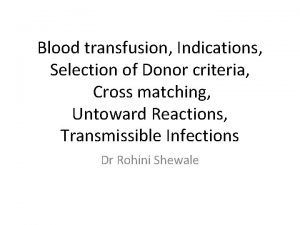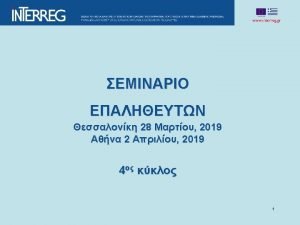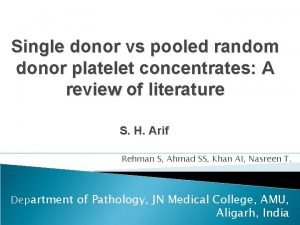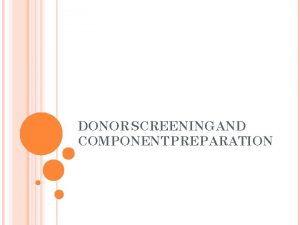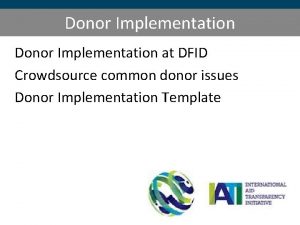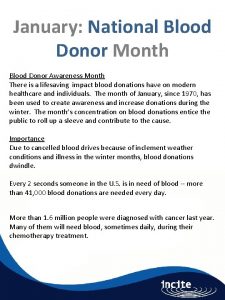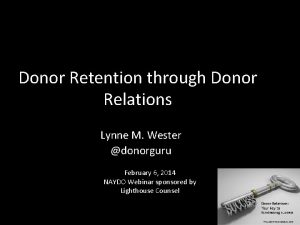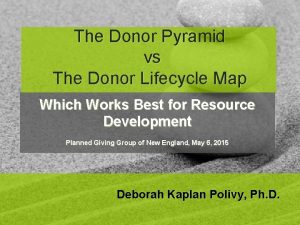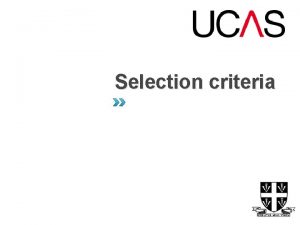SUMMARY REPORT DONOR SELECTION CRITERIA Parmjeet Randhawa MD



























- Slides: 27

SUMMARY REPORT: DONOR SELECTION CRITERIA Parmjeet Randhawa, MD, Associate Professor, Division of Transplantation Pathology, Department of Pathology, University of Pittsburgh.

MAGNITUDE OF PROBLEM IN DONORS >60 YEARS • Organ discard rates of 45% in New England area (Dr Delmonico) • Discard rate of 34% in Illinois area (Dr Mozes) • Pathology similar in discarded & accepted organs – this makes it likely that many suboptimal organs are being used & good ones discarded • There is a need for more standardized selection criteria to safely expand the current donor pool

RECIPIENT CRITERIA COMMONLY EVALUATED IN DONOR KIDNEYS • • • Age PRA & cross match status Waiting time on transplantation list Prognosis on dialysis Availability of vascular access (Dr Danovitch)

DONOR CRITERIA EVALUATED IN ACCEPTANCE OF KIDNEY • Age • History of hypertension, diabetes mellitus, with attention to both the severity & duration of disease • Other medical history such as known renal disorder • Cold ischemia time • Extent of HLA matching

DONOR BIOPSY IS NOT NEEDED IN ALL CASES • • • Known lupus nephritis with chronic renal failure Renal infarction documented before death Known active malignancy Markedly atrophic kidneys Severe calcific arteriosclerosis in hilar vessels

DONOR BIOPSY CAN BE POTENTIALLY VERY HELPFUL IN SELECTED CLINICAL CIRUCMSTANCES • Old donor age: -can define extent of senile arterionephrosclerosis which shows variability from person to person -at age 75, mean %GS 9. 5(1. 5 -23. 0) • Hypertension or diabetes mellitus: can quantify impact of these diseases on structural integrity of kidney: creatinine is not a very sensitive index of renal function • Known donor renal dysfunction: distinguish potentially reversible lesions (ATN) from essentially irreversible lesions

CAUSES OF RELUCTANCE TO USE BIOPSIES IN DONOR SELECTION PROCESS • Partly lack of appreciation of how biopsy can enhance clinical assessment of donor • Concern about prolongation of cold ischemia • Realization that the biopsy may be processed by a resident at night • Studies showing poor reproducibility of biopsy findings • Lack of consistency in literature as to the biopsy parameters that are most relevant

POTENTIAL SOLUTIONS • Need more seminars in conferences & overviews in journals to clearly delineate the utility & limitations • Secure OPO funding for: (a) technical personnel to provide optimal tissue processing & (b) contracts with qualified pathologists to come & read them at odd hours • Increase reproducibility of biopsy readings by national Q/A programs • Generate more literature to convince people who are not yet convinced that biopsies can be helpful

PROSPECTIVE STUDY USING EXISTING PRACTICE PATTERNS-1 • Identify OPO’s willing to implement a Performa listing commonly accepted donor/recipient selection criteria • Information on this Performa could be communicated to surgeon when ever a kidney is offered, & if applicable reasons for refusal should be documented • Perform biopsies on all such suboptimal kidneys & apply a standardized histologic grading system

PROSPECTIVE STUDY USING EXISTING PRACTICE PATTERNS-continued • If organ is not used we could estimate prevalence of mild chronicity in these kidneys & calculate the inappropriate discard rate for good organs • If organ is ultimately used by another center, recipient follow up could be used to validate or invalidate clinical criteria being currently used to discard organs by our less aggressive surgical colleagues

PROSPECTIVE STUDY MODIFYING EXISTING PRACTICE PATTERNS • • Identify OPO’s willing to bx but not use the data Enlist help of surgeons & nephrologists currently cynical about utility of a biopsy -persuade them to bx when in a quandary -determine for themselves how often they find biopsy information useful in decision making process Such biopsies can be processed ideally & need not be read in the middle of the night With sufficient numbers, comparisons needle vs wedge; frozen vs permanents can be performed

PROPOSED RETROSPECTIVE STUDY-1 GOALS • To re-evaluate the widely used current paradigm of using only kidneys with <20% glomerulosclerosis (recommendation based on studies with very few patients) • To determine if kidneys with moderate interstitial fibrosis, arteriosclerosis, & arteriolar hyaline change, alone or in combination, can be safely used.

PROPOSED RETROSPECTIVE STUDYcontinued • Collate biopsies which violated locally set acceptance criteria, but resulted in transplantation as a result of discrepancies between frozen & permanent sections, or due to communication problems • Identify donor organ pairs where only 1 organ was used; compare biopsy pathology in both kidneys & determine clinical outcome in the kidney that was used • Contact US & European centers which perform routine implantation biopsies & study outcomes assoc with samples having >20% GS, Ci 2, CV 2, glom thrombi, tumor nodules

CONCLUSION • Our immediate plan is to formulate a Provisional Performa for collecting clinical & histologic data and circulate it to interested centers • Any useful donor biopsy grading system that emerges will be presented at the Banff 2003 conference backed up by supporting data

GRADING OF GLOBAL GLOMERULOSCLEROSIS • • Treat as continuous variable from 0 -100% Mention total number counted (N) Number with global sclerosis (n) Calculate GS% (n/N x 100 per cent)

STUDIES THAT NEED NOT BE REPLICATED • Purely descriptive studies describing correlations between clinical correlation & histologic parameters • Studies seeking to establish an arbitrary cut off between acceptable & unacceptable histology • We really need to define risk of unfavorable shortterm & long term graft outcome associated with different degrees of histologic abnormality corrected for clinical parameters

OTHER GLOMERULAR LESIONS • FSGS: X/Y when present • GBM thickness, mesangial matrix/cellularity • Diabetic lesions: capsular drops, mesangial nodules GBM and mesangial changes

QUANTITATION OF GLOMERULAR THROMBI • Specify number of glomeruli & glomerular capillary loops involved -thrombus in 1 capillary loop in 1 of 50 glomeruli -thrombotic microangiopathy with thrombi in 25 -50% of glomerular capillary loops in 30 of 60 glomeruli

GRADING OF INTERSTITIAL FIBROSIS (CI) • • Ci 0: no interstitial fibrosis Ci 1: less than 25% of cortical area Ci 2: 26 -50% of cortical area Ci 3: >51% of cortical area

GRADING OF ARTERIOSCLEROSIS • • • Cv 0: no arteriosclerosis Cv 1: less than 25% luminal occlusion Cv 2: 26 -50% luminal occlusion Cv 3: >51% luminal occlusion Mention range of changes if variability seen If only tangential vessels seen, will comparison intimal & medial thickness be helpful? • Record any native intimal inflammation present

GRADING OF ARTERIOLOSCLEROSIS • • • Lesion in arteries 1 -3 layers, no complete IEL ah 0: no arteriolosclerosis ah 1: mild-moderate thickening in at least 1 arteriole ah 2: moderate/severe thickening at least 1 arteriole ah 3: severe thickening in many arterioles NEED SUGGESTIONS ON DEFINING MILD, MODERATE, SEVERE; ? MURAL AREA

HISTOLOGIC CRITERIA FOR TUBULAR INJURY (“ACUTE TUBULAR NECROSIS”) • H&E: tubular dilatation, necrosis of individual cells or occasional complete cross sections, exfoliated cells & cell debris • PAS: diffuse loss BB, denuded/ruptured TBM

SUGGESTED GRADING SCHEMA FOR TUBULAR INJURY • • • None (Gr 0): lumen collapsed, rare cell debris Mild (Gr 1): H&E/PAS changes <25% tubules Moderate (Gr 2): H&E/PAS changes 25 -50% tub Severe (Gr 3): > H&E/PAS changes > 50% tubules Coagulative necrosis, presence & per cent area affected

REPORTING OF NEOPLASTIC LESIONS IN DONOR KIDNEYS • • Epithelial vs mesenchymal Size (correlate intra-operative findings) Completeness of excision Histologic subtype, oncocytic, papillary, clear cell, chromophobe etc for epithelial lesions • Nuclear grade

SAMPLING PROBLEMS • Mention range of changes, if variability seen cv 1 -cv 2, ci 1 -ci 2 • % GS in superficial half & deeper half of wedge biopsy

GROSS EXAMINATION OF KIDNEY • Size of right & left kidneys (normal 9 -11 cm), • Assessment of % area affected by cortical granularity & scarring • Need to assess % normal & % abnormal possibly with biopsies from both areas • Arteriosclerosis in hilum: is a simple grading possible?

Parmjeet Randhawa MD; C 903. 1 PUH; CLIENT #3080; phone 647 -7646; email: randhawapa@msx. upmc. edu@ IBM powerpoint version 97 -sr filename: donorbiopsyuscap; 29 slides
 Fawad randhawa
Fawad randhawa Sonia randhawa
Sonia randhawa Dr fawad randhawa
Dr fawad randhawa Objective of report writing
Objective of report writing Katariina nilsson hakkala
Katariina nilsson hakkala What is the criteria for selection of ointment base?
What is the criteria for selection of ointment base? Which is not the selection criteria of plc
Which is not the selection criteria of plc Customer relationship management matrix
Customer relationship management matrix George makdisi md
George makdisi md Is this true
Is this true Criteria for natural selection
Criteria for natural selection Criteria for natural selection
Criteria for natural selection Software evaluation criteria
Software evaluation criteria Screening and selecting employees international
Screening and selecting employees international Hris selection criteria
Hris selection criteria Project portfolio management selection criteria
Project portfolio management selection criteria Grad connect
Grad connect Jiyo implemented a strategy
Jiyo implemented a strategy Erp selection methods and criteria
Erp selection methods and criteria Motherboard selection criteria
Motherboard selection criteria Balancing selection vs stabilizing selection
Balancing selection vs stabilizing selection Similarities
Similarities K selected
K selected Natural selection vs artificial selection
Natural selection vs artificial selection Artificial selection vs natural selection
Artificial selection vs natural selection What is disruptive selection
What is disruptive selection K selection r selection
K selection r selection Natural selection vs artificial selection
Natural selection vs artificial selection





